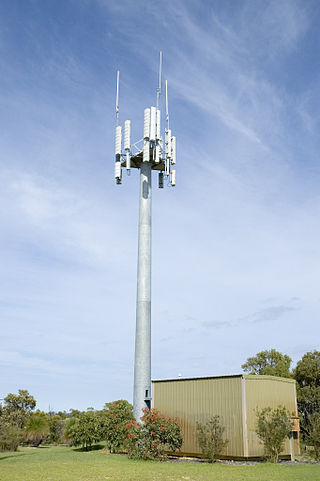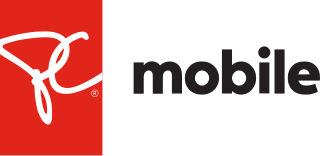
Advanced Mobile Phone System (AMPS) was an analog mobile phone system standard originally developed by Bell Labs and later modified in a cooperative effort between Bell Labs and Motorola. It was officially introduced in the Americas on October 13, 1983, and was deployed in many other countries too, including Israel in 1986, Australia in 1987, Singapore in 1988, and Pakistan in 1990. It was the primary analog mobile phone system in North America through the 1980s and into the 2000s. As of February 18, 2008, carriers in the United States were no longer required to support AMPS and companies such as AT&T and Verizon Communications have discontinued this service permanently. AMPS was discontinued in Australia in September 2000, in Pakistan by October 2004, in Israel by January 2010, and Brazil by 2010.

A SIM card is an integrated circuit (IC) intended to securely store an international mobile subscriber identity (IMSI) number and its related key, which are used to identify and authenticate subscribers on mobile telephone devices. Technically the actual physical card is known as a universal integrated circuit card (UICC); this smart card is usually made of PVC with embedded contacts and semiconductors, with the SIM as its primary component. In practice the term "SIM card" refers to the entire unit and not simply the IC.
A SIM lock, simlock, network lock, carrier lock or (master) subsidy lock is a technical restriction built into GSM and CDMA mobile phones by mobile phone manufacturers for use by service providers to restrict the use of these phones to specific countries and/or networks. This is in contrast to a phone that does not impose any SIM restrictions.
Rogers Wireless Inc. is a Canadian wireless telephone company headquartered in Toronto, providing service nationally throughout Canada. It is a wholly owned subsidiary of Rogers Communications. The company had revenues of just under $15.1 billion in 2018. Rogers Wireless is the largest wireless carrier in Canada, with 11.3 million subscribers as of Q2 2023.

Fido Solutions Inc. is a Canadian mobile network operator owned by Rogers Communications. Since its acquisition by Rogers in 2004, it has operated as a Mobile virtual network operator (MVNO) using the Rogers Wireless network.
GSM services are a standard collection of applications and features available over the Global System for Mobile Communications (GSM) to mobile phone subscribers all over the world. The GSM standards are defined by the 3GPP collaboration and implemented in hardware and software by equipment manufacturers and mobile phone operators. The common standard makes it possible to use the same phones with different companies' services, or even roam into different countries. GSM is the world's most dominant mobile phone standard.

Mobile telephony is the provision of telephone services to mobile phones rather than fixed-location phones. Telephony is supposed to specifically point to a voice-only service or connection, though sometimes the line may blur.

A prepaid mobile device, also known as a pay-as-you-go (PAYG), pay-as-you-talk, pay and go, go-phone, prepay or burner phone, is a mobile device such as a phone for which credit is purchased in advance of service use. The purchased credit is used to pay for telecommunications services at the point the service is accessed or consumed. If there is no credit, then access is denied by the cellular network or Intelligent Network. Users can top up their credit at any time using a variety of payment mechanisms.

The history of mobile phones covers mobile communication devices that connect wirelessly to the public switched telephone network.
TracFone Wireless, Inc. (TFWI) is an American prepaid, no-contract mobile phone provider. TFWI is a subsidiary of Verizon Communications, and offers products and services under several brands. It operates as a mobile virtual network operator (MVNO), holding agreements with the three largest United States wireless network operators to provide service: AT&T Mobility, T-Mobile US, and Verizon.

Prepaid refers to goods and services paid for in advance. Examples include postage stamps, attorneys, tolls, public transit cards like the Greater London Oyster card, pay as you go cell phones, and stored-value cards such as gift cards and preloaded credit cards.
Telus Mobility is a Canadian wireless network operator and a division of Telus Communications which sells wireless services in Canada on its numerous networks. It operates 5G, LTE and HSPA+ on its mainstream networks. Telus Mobility is the second-largest wireless carrier in Canada, with 10.6 million subscribers as of Q3 2020.

Radio Móvil Dipsa S.A.U., doing business as Telcel, is a Mexican wireless telecommunications company, owned by América Móvil. Founded in 1984 and based in Mexico City, Telcel is the leading provider of wireless communications services in Mexico. As of December 31, 2006, Telcel's cellular network covered more than 63% of the geographical area of Mexico, including all major cities, and 90% of Mexico's population. Telcel holds concessions to operate a wireless network in all nine geographic regions in Mexico using both the 850 megahertz and 1900 megahertz radio spectrum. According to Cofetel, as of July 2008, Telcel's subscribers represented an estimated 77.2% share of the Mexican wireless market. Telcel is the largest wireless carrier in Mexico, with 77.2 million subscribers as of March 2020.

Solo Mobile is a discontinued mobile virtual network operator in Canada started by Bell Mobility in 2000. Historically, Solo was considered a discount wireless brand, offering low price monthly plans with some unlimited options in certain cities. Its products and services were only sold in British Columbia, Alberta, Ontario and Quebec. The brand ceased advertising towards new customers since November 2011, and new activations were officially discontinued on May 17, 2012.
Wi-Fi calling refers to mobile phone voice calls and data that are made over IP networks using Wi-Fi, instead of the cell towers provided by cellular networks. Using this feature, compatible handsets are able to route regular cellular calls through a wireless LAN (Wi-Fi) network with broadband Internet, while seamlessly change connections between the two where necessary. This feature makes use of the Generic Access Network (GAN) protocol, also known as Unlicensed Mobile Access (UMA).
The postpaid mobile phone is a mobile phone for which service is provided by a prior arrangement with a mobile network operator. The user in this situation is billed after the fact according to their use of mobile services at the end of each month. Typically, the customer's contract specifies a limit or "allowance" of minutes, text messages etc., and the customer will be billed at a flat rate for any usage equal to or less than that allowance. Any usage above that limit incurs extra charges. Theoretically, a user in this situation has no limit on use of mobile services and, as a consequence, unlimited credit. This service is better for people with a secured income.

Koodo Mobile is a Canadian mobile flanker brand started by Telus in 2008 and mostly oriented toward younger customers. Koodo differs from its parent Telus by not requiring a fixed term contract. Koodo currently provides postpaid, prepaid, and wireless home phone services. Being a subsidiary of Telus, Koodo has been able to offer extensive coverage and a strong presence in mobile retailers. This allowed Koodo to gain a presence nationwide.
The Belize telephone numbering plan is the system used for assigning telephone numbers in Belize.

Arlene Joy Harris is an entrepreneur, inventor, investor, and policy advocate in the telecommunications industry. She is the president and co-founder of Dyna LLC, an incubator for start-up and early-stage organizations historically in the wireless technology field. Harris is widely recognized as a pioneer in mobile and wireless enterprise and an innovator of consumer products and services. In May 2007, she became the first female inductee of the Wireless Hall of Fame, and was named to the Consumer Technology Hall of Fame in 2017.

PC Mobile is a licensed white label prepaid wireless service operated in Canada. Its mobile telephone products and services operate on the network infrastructure operated by Bell Mobility and formerly Telus Mobility, but licensed the proprietary branding and payment media with the President's Choice supermarket store brand owned by Loblaws Inc. It also operates mobile phone kiosks in Loblaws banner stores under the name The Mobile Shop.











